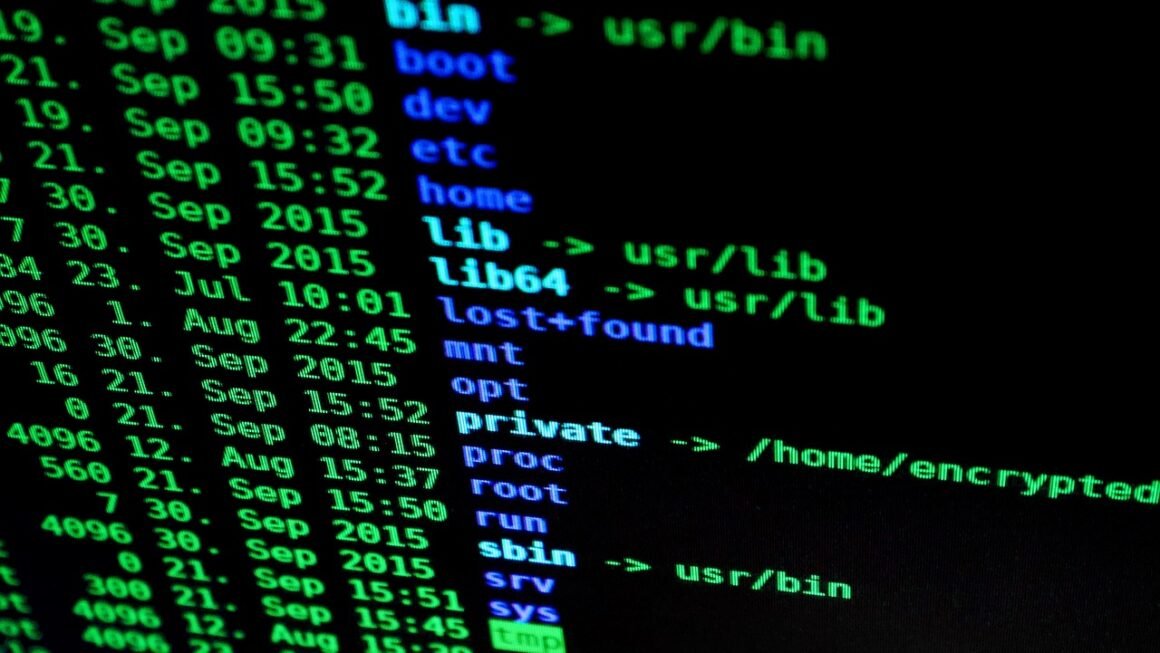Navigating the ever-increasing complexities of modern cybersecurity requires more than just a firewall and antivirus software. Organizations need a holistic view of their security posture, real-time threat detection, and efficient incident response capabilities. This is where Security Information and Event Management (SIEM) systems come into play, acting as a central nervous system for your security operations. This post will delve into what SIEM is, its core components, benefits, and how it empowers organizations to combat sophisticated cyber threats.
What is SIEM?
SIEM, or Security Information and Event Management, is a software solution that aggregates and analyzes security-related data from various sources across an organization’s IT infrastructure. Think of it as a detective that collects clues from different parts of a crime scene (your network, servers, applications, etc.) and pieces them together to identify suspicious activities. It provides a comprehensive view of an organization’s security landscape, enabling security teams to quickly detect, analyze, and respond to potential threats.
Core Components of SIEM
A robust SIEM system comprises several essential components that work together to achieve its objectives:
- Data Aggregation: This is the foundation of any SIEM system. It involves collecting logs and event data from various sources, including:
Security devices (firewalls, intrusion detection systems, antivirus software)
Servers (operating system logs, application logs)
Network devices (routers, switches)
Databases
* Cloud platforms
- Log Management: Once the data is collected, it needs to be organized and stored efficiently. Log management involves centralizing, normalizing, and retaining log data for compliance and auditing purposes. This includes compressing, archiving, and indexing logs to ensure they are readily available for analysis and investigation. Regulations like GDPR and HIPAA require organizations to maintain logs for specific periods, making log management a critical aspect of SIEM.
- Event Correlation: This is where the “intelligence” of the SIEM system comes into play. Event correlation involves analyzing aggregated data to identify patterns and anomalies that may indicate security threats. SIEM uses rules and algorithms to correlate events from different sources, filtering out noise and highlighting suspicious activities.
- Threat Intelligence Integration: Integrating threat intelligence feeds provides SIEM systems with up-to-date information about known threats, attack patterns, and malicious actors. This allows the system to proactively identify and respond to emerging threats. Threat intelligence can include data from open-source feeds, commercial providers, and internal threat research teams.
- Alerting and Reporting: When a potential threat is detected, the SIEM system generates alerts to notify security personnel. These alerts provide details about the incident, including the affected systems, the type of threat, and the severity level. SIEM systems also generate reports that provide insights into an organization’s security posture, including trends, vulnerabilities, and compliance status.
Practical Example: Detecting a Brute-Force Attack
Imagine a scenario where multiple failed login attempts are detected from a single IP address targeting a critical server. Individually, these failed login attempts might seem insignificant. However, a SIEM system can correlate these events and identify them as a potential brute-force attack. The system would then generate an alert, allowing security personnel to investigate and take appropriate action, such as blocking the IP address.
Benefits of Using a SIEM System
Implementing a SIEM solution offers numerous benefits for organizations of all sizes.
Enhanced Threat Detection
- Real-time Monitoring: SIEM systems provide real-time monitoring of security events, allowing for the immediate detection of threats as they occur. This enables security teams to respond quickly and minimize the impact of attacks. For example, detecting a phishing email campaign as it begins to spread through the organization.
- Improved Visibility: By aggregating data from various sources, SIEM provides a comprehensive view of an organization’s security posture, making it easier to identify and investigate potential threats. This includes visualizing data through dashboards and reports.
- Advanced Analytics: SIEM systems use advanced analytics techniques, such as machine learning and behavioral analysis, to identify anomalies and detect sophisticated threats that may not be detected by traditional security tools.
- Proactive Threat Hunting: SIEM empowers security teams to proactively search for threats within their environment, rather than simply reacting to alerts. This involves using SIEM data to identify patterns and anomalies that may indicate hidden threats.
Streamlined Incident Response
- Faster Incident Identification: SIEM systems help security teams quickly identify the root cause of security incidents by providing a centralized view of event data and correlating events from different sources.
- Automated Response: Many SIEM solutions offer automated response capabilities, allowing for the automatic execution of predefined actions in response to specific events. This can include isolating infected systems, blocking malicious IP addresses, or escalating incidents to security personnel.
- Improved Collaboration: SIEM systems provide a platform for security teams to collaborate on incident investigations, sharing information and coordinating response efforts.
Compliance and Reporting
- Regulatory Compliance: SIEM systems help organizations comply with various regulatory requirements, such as GDPR, HIPAA, and PCI DSS, by providing the necessary tools for log management, security monitoring, and reporting.
- Audit Trails: SIEM systems maintain detailed audit trails of security events, which can be used to demonstrate compliance and support forensic investigations.
- Customizable Reporting: SIEM systems offer customizable reporting capabilities, allowing organizations to generate reports that meet their specific needs and requirements.
Practical Example: Detecting Insider Threats
A SIEM system can be configured to monitor employee access to sensitive data. If an employee suddenly starts accessing files or systems outside of their normal job duties, the SIEM can flag this activity as a potential insider threat. This allows security teams to investigate and determine if the employee’s actions are legitimate or indicative of malicious intent.
Selecting a SIEM Solution
Choosing the right SIEM solution is crucial for maximizing its effectiveness. Consider the following factors when making your decision:
Scalability
- Data Volume: Ensure the SIEM solution can handle the volume of data generated by your organization’s IT infrastructure. Cloud-based SIEM solutions often offer better scalability than on-premise solutions.
- User Base: Consider the number of users who will be accessing the SIEM system. Some solutions have limitations on the number of concurrent users.
- Future Growth: Choose a solution that can scale as your organization grows and your security needs evolve.
Integration Capabilities
- Data Sources: Ensure the SIEM solution can integrate with the various data sources in your environment, including security devices, servers, network devices, and cloud platforms.
- Threat Intelligence Feeds: Verify that the solution can integrate with threat intelligence feeds from reputable providers.
- Third-Party Tools: Consider whether the SIEM solution needs to integrate with other security tools, such as ticketing systems or vulnerability scanners.
Ease of Use
- User Interface: Choose a solution with a user-friendly interface that is easy for security personnel to navigate and use.
- Reporting and Dashboards: Ensure the solution offers customizable reporting and dashboards that provide clear and actionable insights.
- Deployment and Maintenance: Consider the ease of deployment and maintenance. Cloud-based solutions typically offer simpler deployment and management compared to on-premise solutions.
Cost
- Licensing Fees: Understand the licensing model and associated costs. Some solutions charge per device, while others charge based on data volume.
- Implementation Costs: Factor in the costs of implementation, including hardware, software, and professional services.
- Ongoing Maintenance Costs: Consider the ongoing maintenance costs, including software updates, support, and training.
Practical Example: Cloud vs. On-Premise SIEM
Consider a small-to-medium sized business with limited IT resources. A cloud-based SIEM solution might be a better fit because it offloads the burden of hardware maintenance and software updates to the provider. Larger enterprises with complex IT environments might prefer an on-premise solution that offers greater control and customization.
Implementing a SIEM System
Implementing a SIEM system is a complex process that requires careful planning and execution.
Define Your Goals
- Identify Key Use Cases: Determine the specific security challenges you want to address with the SIEM system. For example, detecting insider threats, preventing data breaches, or complying with regulatory requirements.
- Establish Key Performance Indicators (KPIs): Define measurable metrics to track the effectiveness of the SIEM system. For example, the number of detected threats, the time to resolve incidents, or the reduction in security risks.
- Set Priorities: Prioritize the use cases and data sources that are most important to your organization.
Configure Data Sources
- Enable Logging: Ensure that logging is enabled on all relevant data sources, including security devices, servers, network devices, and cloud platforms.
- Normalize Data: Configure the SIEM system to normalize data from different sources into a common format.
- Filter Noise: Implement filters to remove unnecessary data and reduce the volume of alerts.
Create Correlation Rules
- Develop Custom Rules: Create custom correlation rules that are tailored to your organization’s specific security needs and threats.
- Leverage Threat Intelligence: Integrate threat intelligence feeds to enhance the accuracy and effectiveness of your correlation rules.
- Test and Refine: Continuously test and refine your correlation rules to ensure they are working as intended.
Train Your Team
- Provide Training: Provide comprehensive training to your security team on how to use the SIEM system effectively.
- Establish Roles and Responsibilities: Clearly define the roles and responsibilities of each team member in the SIEM implementation and operation.
- Develop Procedures: Develop standard operating procedures (SOPs) for incident response, threat hunting, and other SIEM-related activities.
Practical Example: A Phased Rollout
Instead of implementing the SIEM system across the entire organization at once, consider a phased rollout. Start with a pilot program in a specific department or location. This allows you to test the system, refine your configurations, and train your team before rolling it out to the entire organization.
Conclusion
SIEM systems are a cornerstone of modern cybersecurity, providing organizations with the visibility, intelligence, and automation needed to effectively detect, analyze, and respond to threats. By aggregating data from various sources, correlating events, and integrating threat intelligence, SIEM systems empower security teams to proactively protect their organizations from increasingly sophisticated cyber attacks. Choosing the right SIEM solution and implementing it effectively is crucial for maximizing its benefits. Organizations should carefully consider their specific needs, resources, and security objectives when making their decision. With a well-implemented SIEM system, organizations can significantly enhance their security posture and protect their valuable assets from harm.



